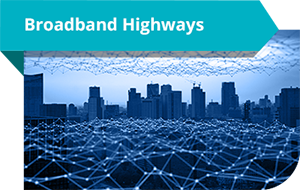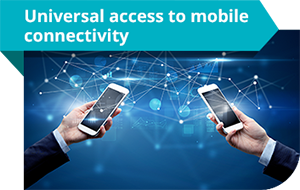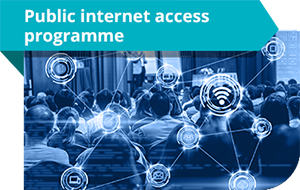News

In August 2014, Hon’ble Prime Minister, Narendra Modi, laid the foundation for Digital India – a programme to transform India into digital empowered society and knowledge economy. A visionary programme to be implemented in phases that will digitise government services, bring in public accountability and provide a digital infrastructure as a utility to every citizen.
To ensure that technology becomes the pivot for enabling this change, we need large-scale connectivity. And no other tool has the ability to reach 1.37 billion people across the expansive 3.29 million sq km geography of our nation than VSAT.
The government has envisioned nine pillars or areas of growth and here’s how VSAT can help weave different initiatives, ideas and thoughts together into a single comprehensive vision.

The National Information Infrastructure (NII) is looking to develop a cloud infrastructure for various government departments, starting from the state level percolating right down to 2,50,000 panchayats. VSAT can easily service the huge number of panchayats and provide real-time connectivity with national and state datacentres.

Looking to plug the gap of tele-connectivity across 42,300 villages in India, VSAT networks can provide connectivity to remote and far-flung regions of the country. VSAT supports all kinds of application from video to voice and data, with a wide range of data speeds from few kbps per second to 8 mbps per second. All this at a fraction of the time and cost of a traditional telecom setup.

The government intends on using the network of 150,000 post offices as multi service centres which includes a public internet access programme. The Department of Posts can act as a hub gateway with interface to thousands of post offices and several application servers through VSAT technology.

As the government looks to re-engineer business process and bring in integration of services and platforms such as UIDAI, payment gateways, mobile, Electronic Data Interchange (EDI), etc., VSAT provides unmatched uptime at 99.9%, ensuring uninterrupted connectivity between governmental departments, and integrated and interoperable service delivery to citizens and businesses.

The National e-Governance Plan includes 31 Mission Mode Projects that are looking to leverage
technology for an India of the future. These include:
E-education and digital literacy modules to be established across all schools, and free WiFi for about
250,000 secondary and higher secondary schools.
E-healthcare that would cover tele-medicine, access to digital patient records and online medicine supply.
Technology for farmers that provides real-time and transparent price information, access to new markets,
and easy payment and loan facilities through digital banking.
Technology for financial inclusion using mobile banking, micro ATM programmes and post offices.
VSAT with its capability to reach the remotest of locations in India, unwavering uptime of 99.9%, high
speed, scalable nature, quick deployment of just a couple of hours and mobility is ‘the’ technology our
country needs to fulfil its Digital India dream.
The technology can make the future of a digitally-empowered India truly bright.